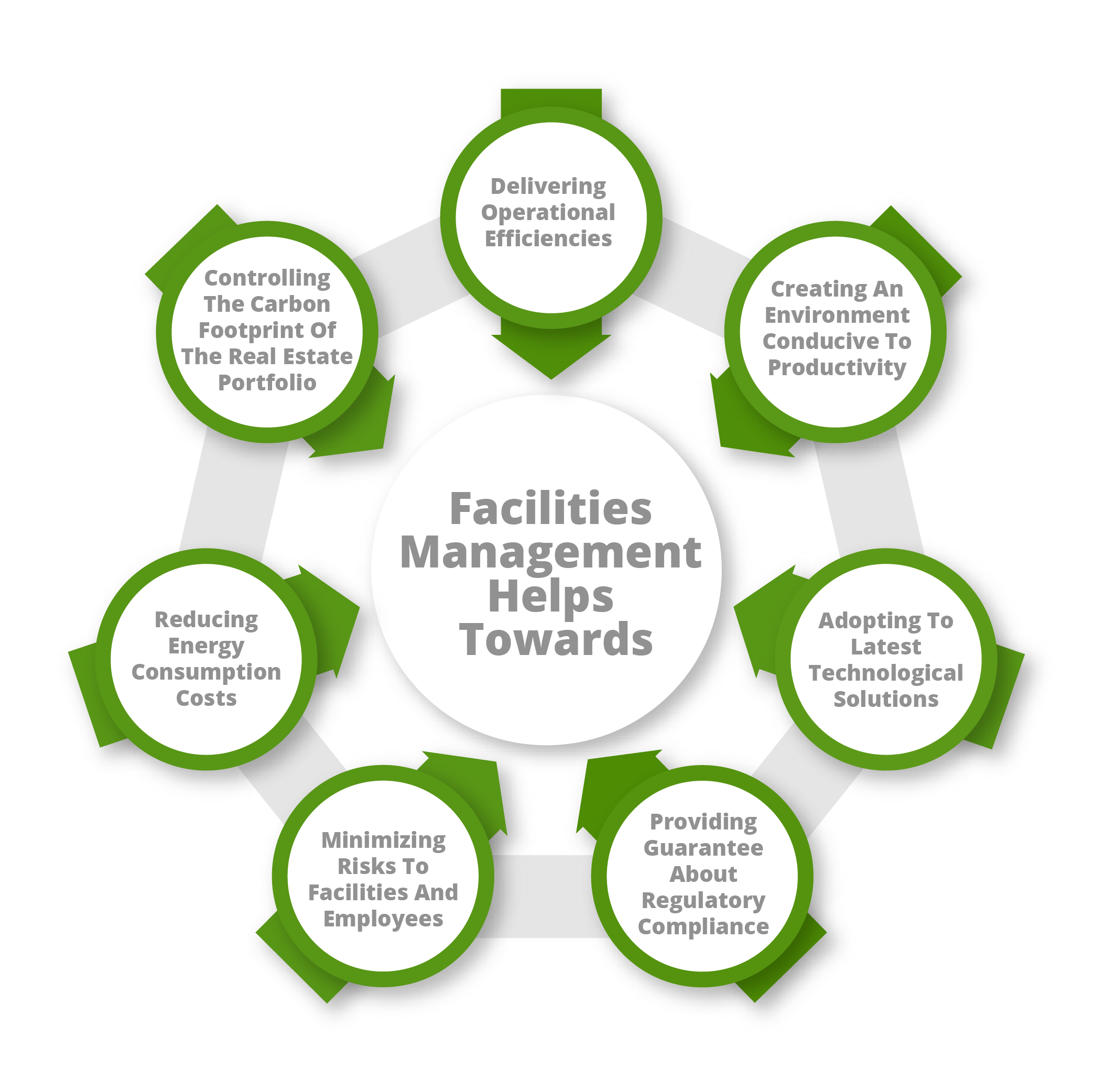Total Facility Management: A Holistic Solution for Property Maintenance
Total Facility Management: A Holistic Solution for Property Maintenance
Blog Article
How Total Facility Management Improves Upkeep and Operations
Total Facility Management (TFM) represents a transformative shift in how companies come close to upkeep and procedures. By leveraging data-driven techniques and integrated modern technology, TFM not just prepares for and mitigates prospective problems however additionally maximizes source allocation and improves productivity.
Improved Maintenance Methods
Improved Upkeep Strategies are necessary for enhancing the performance and long life of facilitiess. These approaches encompass a systematic method to upkeep that stresses proactive procedures, predictive analytics, and condition-based monitoring. By executing such approaches, companies can successfully lower unplanned downtimes and lessen functional disturbances.
One vital part of enhanced upkeep is using data-driven decision-making tools. These tools permit facility supervisors to analyze historical performance data, identify patterns, and projection prospective failures before they take place. This predictive upkeep approach not only prolongs the life cycle of equipment yet also enhances security and compliance standards.
Educating and empowering maintenance personnel are equally vital in implementing boosted strategies (Total Facility Management). Well-trained personnel can execute routine evaluations and address small problems before they rise. Additionally, adopting an extensive asset management system promotes tracking of equipment condition, upkeep history, and scheduling of preventative actions
Streamlined Operational Workflows
Maximizing functional operations is critical for the general efficiency of facility management. By executing structured procedures, organizations can reduce redundancies, minimize hold-ups, and enhance productivity. A well-structured functional process permits facility managers to allot sources effectively, ensuring that tasks are completed in a prompt fashion.
Utilizing facilitiess management software application can automate routine jobs such as work order management, inventory monitoring, and scheduling. Clear communication networks among team participants foster cooperation and accountability, better improving operational efficiency.
Systematizing procedures is another vital element. Establishing finest techniques assists make sure that all team participants are straightened in their approach, decreasing the likelihood of mistakes and enhancing solution shipment. Regular training and updates on workflow processes also play an essential role in maintaining consistency and performance.
Inevitably, structured functional workflows add to an extra receptive facility management system, enabling organizations to concentrate on tactical initiatives as opposed to being bogged down by management burdens. By focusing on performance, facility managers can substantially enhance the general performance of their procedures.
Proactive Issue Resolution

Routine evaluations and checking systems play a vital duty in this process, allowing facility managers to collect data and expect prospective failures. In addition, cultivating open communication channels amongst employee encourages the early reporting of concerns, even more helping with prompt resolutions.
Executing a detailed facility management software can simplify the tracking of maintenance activities and concern reporting, offering beneficial understandings right into repeating troubles and their source. This data-driven approach enables educated decision-making and prioritization of sources.
Eventually, aggressive problem resolution not only protects the integrity of facility procedures however likewise boosts employee fulfillment and security. By buying approaches that concentrate on prevention, organizations can develop a more durable and reliable operational setting, establishing a strong foundation for future development and success.
Price Efficiency and Resource Management
Exactly how can companies accomplish an equilibrium in between expense effectiveness and effective resource management in facility operations? The assimilation of total facility management (TFM) offers a strategic structure that improves monetary efficiency while maximizing source allowance. By consolidating services, companies can simplify procedures, decrease redundancies, and leverage economic climates of range.
Efficient resource management starts with an extensive evaluation of existing possessions and operational procedures. Utilizing information analytics, companies can recognize underutilized resources and address inadequacies. This educated technique allows the application of targeted maintenance schedules, thus lengthening possession life and minimizing unplanned downtime.

Educating and development of facility management personnel better enhance cost performance by equipping them with the skills required to manage resources carefully. Ultimately, by embracing a holistic technique to facility management, organizations can attain significant expense savings while ensuring that operational effectiveness stays a leading concern.
Sustainability and Ecological Impact
The assimilation of total facility management (TFM) not only boosts expense performance however likewise plays a crucial duty in promoting sustainability and lowering ecological impact. By adopting click here now an all click over here natural strategy to facility procedures, TFM helps with the implementation of sustainable methods that decrease source usage and waste generation.
Among the key parts of TFM is the optimization of power use. This consists of the adoption of energy-efficient modern technologies, routine upkeep of HVAC systems, and the application of clever building management systems. These steps not only reduced energy prices however additionally dramatically lower greenhouse gas emissions.
In addition, TFM promotes making use of lasting products in facility maintenance and remodelling jobs. By focusing on eco-friendly items and methods, facilitiess can reduce their general ecological impact while fostering much healthier interior settings.

Conclusion
In final thought, Total Facility Management dramatically enhances upkeep and operations with methodical strategies that highlight anticipating analytics and condition-based tracking. TFM promotes sustainable techniques, eventually leading to enhanced facility management end results and a society of constant improvement within organizations.
Total Facility Management (TFM) represents a transformative shift in how organizations approach maintenance and procedures. Using facilitiess management software can automate regular jobs such as work order management, inventory monitoring, and scheduling.Just how can companies attain a balance between expense efficiency and reliable source management in facility procedures? The assimilation of total facility management (TFM) offers a calculated framework that boosts economic performance while optimizing resource allocation.In conclusion, Total Facility Management substantially improves upkeep and operations through methodical strategies that emphasize predictive analytics and condition-based tracking.
Report this page